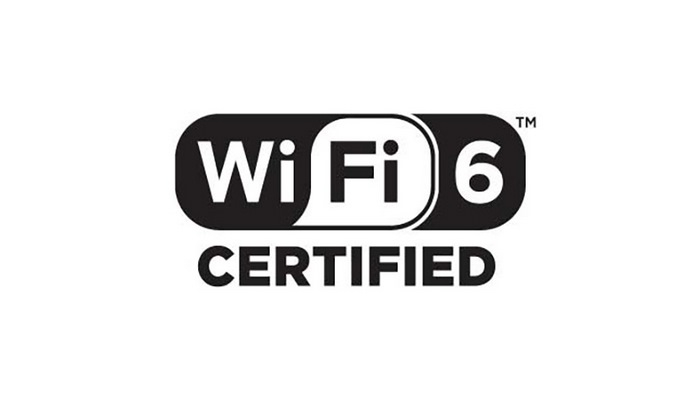
Wi-Fi 6: Everything you need to know
What exactly is Wi-Fi 6?
Wi-Fi 6 is a new Wi-Fi standard, named so to avoid confusion with older standards, which are now designated as follows:
- 802.11b is now Wi-Fi 1
- 802.11a is now Wi-Fi 2
- 802.11g is now Wi-Fi 3
- 802.11n is now Wi-Fi 4
- 802.11ac is now Wi-Fi 5
- 802.11ax is now Wi-Fi 6
Wi-Fi 6 is based on the new IEEE 802.11ax standard, so you might see the two terms interchanged. It's still going to act like the Wi-Fi you know and love now, except with some added benefits. The Wi-Fi Alliance (the standards body that oversees Wi-Fi technology) lists these four key benefits of Wi-Fi 6:
- Faster overall transfer speeds to and from devices
- More capacity for connected devices
- Better performance with many connected devices
- Less device battery drain when connected
To summarize, Wi-Fi 6 expands on Wi-Fi 5 (802.11ac) to be better suited to handle large crowds vying for data at the same time (including expansive public events), and it is capable of handling theoretical speeds up to about 9.6 Gbps, which is about three times the current maximum theoretical speed limit of Wi-Fi 5 (802.11ac). As we move to higher-resolution video streaming, demanding gaming performance, and more connected devices, Wi-Fi 6 will be better suited to handle our needs.
How is Wi-Fi 6 different from previous Wi-Fi standards?
 Image courtesy of Intel.
Image courtesy of Intel.
Wi-Fi 6 devices connected to Wi-Fi 6 routers will see potential performance gains up to about 40 percent compared to Wi-Fi 5 devices and routers. This is achieved due to Wi-Fi 6 being able to pack more data into each packet, and it will work on both the 2.4Gz and 5GHz bands. A larger benefit, however, is revealed when there are multiple devices connected to the same network. If you've ever stayed in a hotel or have connected to Wi-Fi at a coffee shop, you know how slow throughput can be due to the main access point attempting to handle all simultaneous connections.
In a writeup on Intel's IT Peer Network, it's claimed that Wi-Fi 6 will improve the efficiency of a single network by about four times, which will, in turn, improve average throughput for those connected to Wi-Fi 6 in heavily congested areas by about four times. Wi-Fi 6 continues and expands on the MU-MIMO trend released with Wi-Fi 5, which allows a Wi-Fi radio to deliver data simultaneously to multiple devices instead of in a rotating manner. Instead of handling four simultaneous streams, Wi-Fi 6 ups the number to eight.
Thanks to the addition of Target wake time (TWT) in Wi-Fi 6, all connected devices should see significantly less battery drain. Compatible devices and routers will communicate key wake and sleep times, which means less up time for an adapter and less pull on a battery. Not only is this important for everyday devices like laptops — Intel's 9th Gen processors (CPU) include support for Wi-Fi 6 — and modern phones like the Samsung Galaxy S10, it will also make a difference as we see more Internet of Things (IoT) products enter our homes and businesses.
How can you tell Wi-Fi standards apart?
 Image courtesy of Wi-Fi Alliance.
Image courtesy of Wi-Fi Alliance.
Other than knowing your own hardware, being able to tell which Wi-Fi standard you're connected to while in public can be made easier with new interface icons. This will depend on the device that's being connected to Wi-Fi, but you can expect most modern phones, laptops, and tablets to jump on board before long.
When connecting, it's expected that you'll see a standard Wi-Fi icon with a number included, which will denote which standard is being used.
Are wireless 5G and Wi-Fi 6 the same thing?

No, these two technologies are not the same. Wireless 5G is a new cellular technology designed for mobile devices and Always-Connected laptops, while Wi-Fi 6 is a wireless LAN (WLAN) technology that expands on (and is compatible with) older standards. You'll find that wireless 5G is most commonly associated with cellular data, while Wi-Fi 6 is most commonly associated with your home or office network.
Do you need to buy a new router for Wi-Fi 6?
If you're currently using a Wi-Fi 4 or Wi-Fi 5 router with your devices and you'd like to get in on the Wi-Fi 6 hype, you will need to buy a new router (and you'll need compatible devices). There aren't a lot of router options on the market yet, but we do recommend the NETGEAR Nighthawk AX8. It brings all the benefits of Wi-Fi 6, and rest assured it remains compatible with any older devices that were using previous Wi-Fi standards.



Comments
Show comments Hide comments